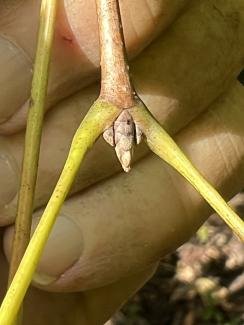
Habitat: Rich cove and slope forests, rich floodplain forests, dry-mesic to dry calcareous forests and woodlands, northern hardwood forests, and other high-elevation forests; also characteristic of rich montane oak-hickory forest understories. Favors moderately to strongly base-rich soils at lower elevations but thrives in extremely acidic, infertile soils at higher elevations. Common in the mountains; infrequent and usually restricted to sheltered bluffs and north-facing slopes in the n. and inner piedmont. Occasionally escaped beyond its native range.
The Sugar Maple attracts pollinators like moths and butterflies to their flowers, while song birds and small mammals eat the seeds. Some birds make their nests in the cavities of the Sugar Maple. It supports Imperial Moth larvae that appear from April to October.
Note: According to Plant NoVA Natives: "We are at the southern edge of its range, which may become problematic as temperatures rise - it is failing badly in Richmond."




